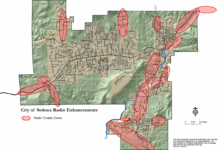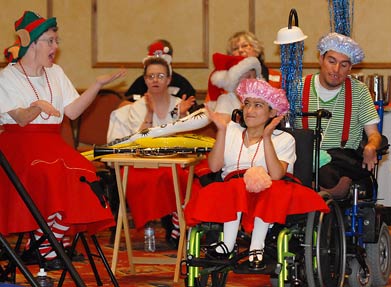Paul Eaton crams his small car full of two routes worth of Meals on Wheels headed to the Village of Oak Creek on Friday, June 20. Eaton and other volunteer drivers are taking on the extra route because of a shortage of drivers available for VOC destinations.
Help!
Seniors in the Village of Oak Creek who rely on Meals on Wheels for home delivery of nutritious meals may soon go hungry if a few more local volunteers don’t step forward.
Larson Newspapers
Help!
Seniors in the Village of Oak Creek who rely on Meals on Wheels for home delivery of nutritious meals may soon go hungry if a few more local volunteers don’t step forward.
“Two-thirds of our homebound meals go to VOC residents,” said Susan Barrington, director of the Sedona Community Center. “Yet, only eight of our 50 volunteers live in VOC and none of our 10 restaurant partners are located there.”
This means longer routes and more deliveries for the existing volunteers, along with higher gas consumption — situations that may cause some of them to end their contribution.
If more volunteers stepped forward, each of them would have a shorter route and the luxury of a little extra time to visit with each person for whom it may be the only daily human contact, according to Barrington.
SCC officially adopted the responsibility for MOW in 1982, preparing daily lunch menus that include a salad, three-compartment hot meal, dessert and beverage.
In addition, on Fridays the SCC Breakfast Club sends along a full grocery bag of bread, eggs, yogurt, fruit and cereal for the weekend.
Meals are kept warm using pre-heated bricks and cold items are transported in coolers.
In the past year, those deliveries were made faithfully Monday through Friday, totalling 12,500, well more than double the number in earlier years.
“A growing client list, spiralling food costs, fewer donations to food banks, out of control gas costs and a smaller number of volunteers are putting our MOW program in a state of crisis,” Barrington said.
One way to keep the program going, at least temporarily, would be to eliminate daily hot meals, substituting one weekly delivery of frozen meals.
“This is way less than optimal for myriad reasons,” Barrington said.
One of those reasons is that observations of client conditions are a critical part of the scheme.
When drivers return from their routes, they report any changes in the health of those they encountered.
In addition, if a client doesn’t respond to the daily visit, welfare checks are requested of the police or sheriff’s departments.
The situation in this area is not unique; nearly 60 percent of the nationwide MOW programs reported that gas prices were taking a toll on their volunteer base, according to a report released by the Meals on Wheels Association of America June 3.
Half of the communities responding said that they had been forced to eliminate meal delivery routes or to consolidate meal services.
Others had to resort to reducing the number of clients.
“It is almost impossible to overstate the seriousness of the situation,” said Enid Borden, president and CEO of
MOWAA. “These are health and welfare and even life and death issues.”
Despite the national trend, Barrington is dead against refusing service to existing clients or refusing service to new clients, and she is researching alternative solutions.
“Meals on Wheels has been available for so long in our community that it’s part of the very fabric of our culture,” Barrington said.
In the meantime, the director sends an urgent plea to all residents of VOC to consider stepping up as a volunteer.
For information on how to help, call Susan Barrington at 282-2834.
Susan Johnson can be reached at 282-7795, Ext. 129 or e-mail sjohnson@larsonnewspapers.com




















